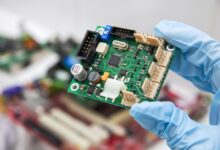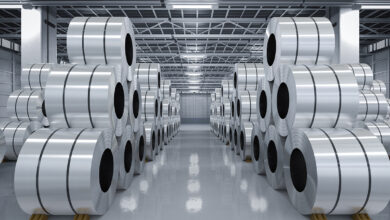How to Solve the Issue of an Overheating Laptop

Laptops have become more powerful and compact than ever before. A steep increase in CPU performance was facilitated by chips that are ever more densely packed with transistors. In parallel, slimmer cases pack an ever increasing number of processors and stronger graphics cards support bigger screens with higher resolutions. These developments come at a cost: excess heat. The greatest threat for your laptop, except for your coffee mug, is overheating. It can cause hardware failure and permanent damage. Let me show you how to prevent or fix an overheating laptop and thus improve the performance and extend the lifespan of your computer.
The Basics of Overheating Computers
How Do You Know Your Laptop Is Overheating?
A sure sign that your notebook gets too hot though is when your fan is always running at maximum speed. You may also experience reduced performance because the CPU cuts back its clock speed to escape heat pressure. Moreover, the fail-safe software may trigger a sudden shut down to prevent hardware damage.
What Causes Overheating?
In two words: insufficient cooling. Potential reasons include dust blocking intake grills or exhaust ports, a clogged up fan, or a degenerated thermal grease (aka thermal compound) between the heat sink and the CPU. You can fix all of these things yourself, though some jobs will be tougher than others.
How Can You Prevent or Fix an Overheating Laptop?
Several simple hardware fixes can cure overheating.
1. Fix Internal Cooling
The first and most important thing you need to do when your laptop is overheating is to clean the fan(s) that provide(s) cooling to the CPU and graphics card. Over time, they build up layers of dust and dirt that slow them down and block airflow. Consult your laptop’s manual or manufacturer to find out how you can open the laptop to access and clean these parts.
Before you attempt to do any cleaning, however, follow these steps:
- Shut down the computer
- Remove the battery
- Unplug the power strip
- Ground yourself
Carefully clean the fan(s) with a cotton swab dipped in a drop of alcohol. Make sure the alcohol has completely evaporated before you reconnect the laptop to the power. You can also use a vacuum cleaner to remove the dust and dirt that clocks up the fan(s). To prevent damage to the fan, do not let it revolve in the wrong direction. If you want to use canned air to clean the fan, arrest the fan by holding it down.
Next, you can clean the exhaust port by sucking out air with a vacuum cleaner. The exhaust port usually sits on the side of the laptop. It’s the opening that blows out hot air.
The intake grills are small openings that allow air to be sucked into the laptop by the revolving fans. They can sit on the sides or at the bottom of your notebook. To clear the intake grills, spray them with canned air.
Finally, you can apply fresh thermal grease to the interface between the CPU and its heat sink. Again, please consult the laptop’s manual or manufacturer to obtain instructions on how to disassemble these components.
2. Keep the Laptop on a Hard & Flat Surface
Most laptops suck in cooling air through their bottoms. Uneven surfaces, like a blanket, pillow, or your lap, obstruct your laptop’s airflow. Subsequently, the cooling is impaired, heat builds up, the surface becomes hot, the temperature of sucked in cooling air increases, and eventually the laptop overheats.
This scenario is easily avoided by keeping the laptop on a hard and flat surface. You can use something as simple as a tray or get a special laptop holder or lap stand. We’ve previously shown you how to build your own laptop stand or you could buy a laptop tray.
Personally, I’m using this laptop stand for surfing on the sofa:
3. Invest in a Laptop Cooler or Cooling Pad
Laptop coolers are meant to provide additional cooling. However, getting the wrong cooler can actually make the problem worse. Before you purchase a cooler, you need to understand the flow of air into and out of your laptop.
As mentioned above, most laptops suck in air for cooling from the bottom. This makes sense because warm air rises upwards. However, a cooler that sits underneath the laptop and sucks air away from it, does not contribute to laptop cooling and rather accelerates overheating.
If your laptop has intake grills at its bottom, purchase a cooler that blows cool air upwards, i.e. into the laptop. You can also get a passive cooler that does not consume power and merely absorbs heat.
What Are Potential Software Fixes?
If none of the hardware fixes result in lasting improvements, you can also revert to software fixes that address the performance and power usage of your laptop. However, addressing excessive heat with a software fix means you give up performance in favor of preserving the hardware.
You can either reduce the brightness of your screen or reduce the CPU clock speed. In Windows, underclocking or undervolting is done in the BIOS, but can also be controlled through software tools.
The Top 3 Signs Your Laptop Is Overheating
Finally, let’s lighten this up a little. This list was inspired by a Top 11 list on BBSpot.
- You’ve underclocked the CPU so much that the Commodore 64 team is overtaking you on Folding@Home.
- Frodo tosses the one ring into your keyboard.
- Al Gore shows up to kick your ass.
How often do you clean your laptop to save it from overheating? Do you have any additional tips and tricks to share? Let us know in the comments section below!











